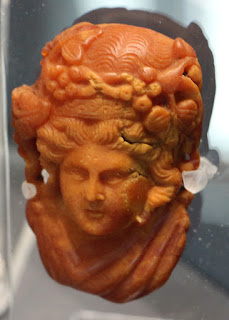Ovid's Ibis

In 1 BCE, the Roman poet Pūblius Ovidius Nāsō , known to us as Ovid, penned three books, the Ars amatoria (The Art of Love) instructing Romans in the techniques of seduction and love. The first book addresses men and teaches them how to seduce women, the second, also to men, teaches how to keep a lover. The third book addresses women and teaches seduction techniques. Ovid describes the places one can go to find a lover, like the theater, a triumph, which he thoroughly describes, or arena – and ways to get the girl to take notice, including seducing her covertly at a banquet. Ovid emphasizes care of the body for the lover and advises men to avoid giving too many gifts, keep up their appearance, hide affairs, compliment their lovers, and ingratiate themselves with slaves to stay on their lover's good side. Ovid gives women detailed instructions on appearance telling them to avoid too many adornments. He advises women to read elegiac poetry, learn to play games, sleep with people of ...



